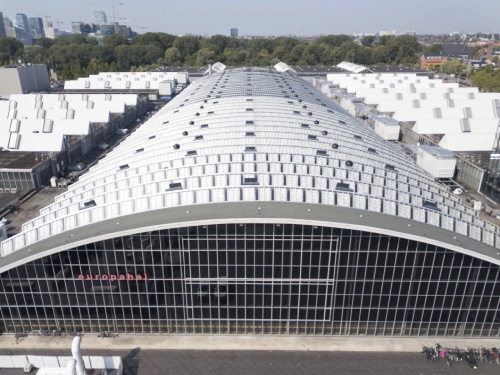Designing daylight solutions for commercial buildings
Introduction
The availability of artificial light over the last two centuries and the restructuring of our working day means we are fast becoming the 'Indoor Generation', a generation of people whose experience of daylight and fresh air during the week can often be restricted to the morning commute to work or school, a quick lunch break or a stop at the supermarket on the way home.
The influence that architecture has on our lives cannot be understated, and the need to create healthier, brighter indoor spaces with greater access to daylight and to the outdoors is a pressing one.
Whilst we have adapted to living indoors, we are essentially still outdoor animals, and our genetic code is designed for us to live in a natural environment.
Light is an acute stimulant that directly alerts the brain and thus can affect energy levels as well as alertness and productivity. It affects mood and influences social behaviours and cognitive performance.
The impact of daylight on occupants in commercial buildings
Research on office buildings has shown that office workers highly value access to a window and to varying degrees of daylight. Even in darker locations within a building, the occupants still expressed satisfaction with the daylight level, as long as they could look into a daylit space. In the YouGov survey, 39% of respondents said that daylight significantly impacts on their mood.
To find out more on how to design commercial buildings for improved health and productivity by utilising daylight download your free copy of the whitepaper, Designing daylight solutions for commercial buildings.
Related articles on Designing Buildings
- Aspects of daylighting design covered by EN 17037.
- Daylight.
- Daylight factor.
- EN 17037 Daylight in buildings.
- Glare.
- Health and wellbeing impacts of natural and artificial lighting.
- Lighting.
- Lighting and health infographic.
- Lighting designer.
- Lighting and offices.
- Rooflights.
- Site layout planning for daylight and sunlight.
- Types of building EN 17037 applies to.
- Solar gain.
- Types of lighting.
- Windows.
Featured articles and news
Latest Build UK Building Safety Regime explainer published
Key elements in one short, now updated document.
UKGBC launch the UK Climate Resilience Roadmap
First guidance of its kind on direct climate impacts for the built environment and how it can adapt.
CLC Health, Safety and Wellbeing Strategy 2025
Launched by the Minister for Industry to look at fatalities on site, improving mental health and other issues.
One of the most impressive Victorian architects. Book review.
Common Assessment Standard now with building safety
New CAS update now includes mandatory building safety questions.
RTPI leader to become new CIOB Chief Executive Officer
Dr Victoria Hills MRTPI, FICE to take over after Caroline Gumble’s departure.
Social and affordable housing, a long term plan for delivery
The “Delivering a Decade of Renewal for Social and Affordable Housing” strategy sets out future path.
A change to adoptive architecture
Effects of global weather warming on architectural detailing, material choice and human interaction.
The proposed publicly owned and backed subsidiary of Homes England, to facilitate new homes.
How big is the problem and what can we do to mitigate the effects?
Overheating guidance and tools for building designers
A number of cool guides to help with the heat.
The UK's Modern Industrial Strategy: A 10 year plan
Previous consultation criticism, current key elements and general support with some persisting reservations.
Building Safety Regulator reforms
New roles, new staff and a new fast track service pave the way for a single construction regulator.
Architectural Technologist CPDs and Communications
CIAT CPD… and how you can do it!
Cooling centres and cool spaces
Managing extreme heat in cities by directing the public to places for heat stress relief and water sources.
Winter gardens: A brief history and warm variations
Extending the season with glass in different forms and terms.
Restoring Great Yarmouth's Winter Gardens
Transforming one of the least sustainable constructions imaginable.
























